
PHENOMENA is a revelation. It’s the kind of horror movie you wish for. Every time I try to describe the movie to a regular human person who has never heard of it before (an unfortunately high number of human persons, in this country and state at least), they decide that I am making it up, and also that I am insane. Let me try recapping it and you can decide for yourself:
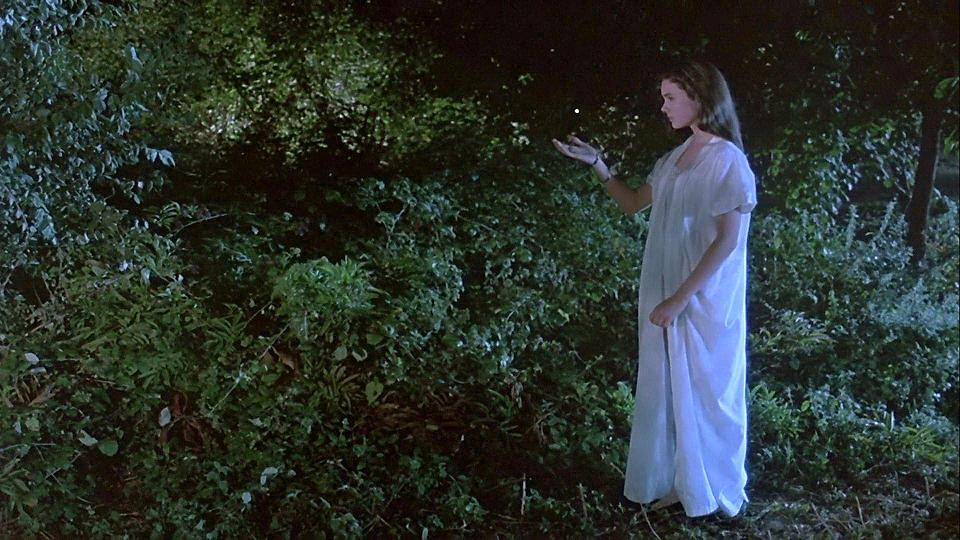
A teenage girl (Jennifer Connelly) who has the ability to commune with insects arrives at a Swiss boarding school, where a diminutive murderer has been killing girls at night. Jennifer teams up with the unlikely trio of a local bug expert (played by Donald Pleasence, of course), his chimpanzee lab assistant Inga, and a flesh fly in a box, in order to solve the murders.
Take a moment if you need to absorb that information slowly.
Let me also add that for much of the movie, you can’t be sure that the chimpanzee isn’t the murderer. Do you know what that means?

It’s not just a vicious horror movie.
It’s not just a demented fairy tale.
It’s also a Hitchcockian wrong-man thriller starring an ape!
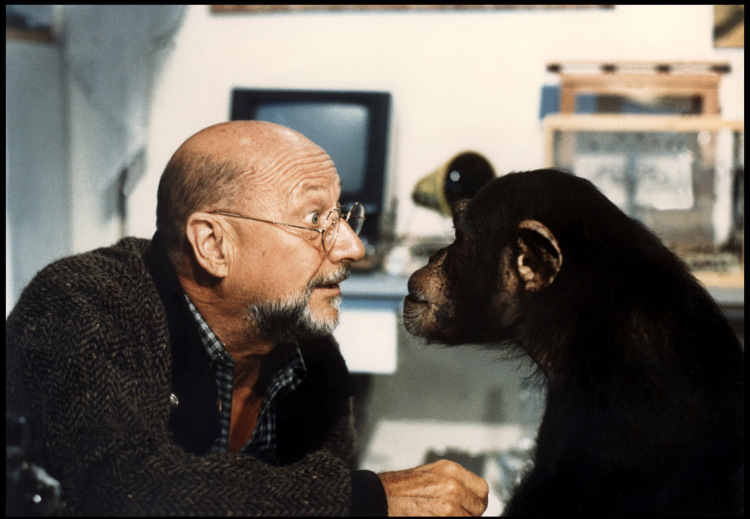
PHENOMENA hasn’t been in my life as long as some of my other favorite movies, but it’s rapidly skyrocketing up that stratosphere into rarified air. I could literally talk about this movie all day. I won’t, but I could. Stop me on the street sometime, I’ll bend your ear. It makes me smile just to think about this movie, but it makes me smile weirdly, because the movie is insane. Let me say it here in black-and-white without quotation marks: I sincerely, absolutely believe that PHENOMENA is a brilliant horror film. You can find vastly differing opinions elsewhere, but this essay is about mine.

PHENOMENA, originally released in the United States as CREEPERS (the reason for which are apparent on the poster above), is the work of Italian horror auteur Dario Argento. The single best-known Argento film is probably 1977’s SUSPIRIA, but SUSPIRIA is far from the only notable film in his arsenal. Argento’s primary milieu is within the genre of film known as giallo.
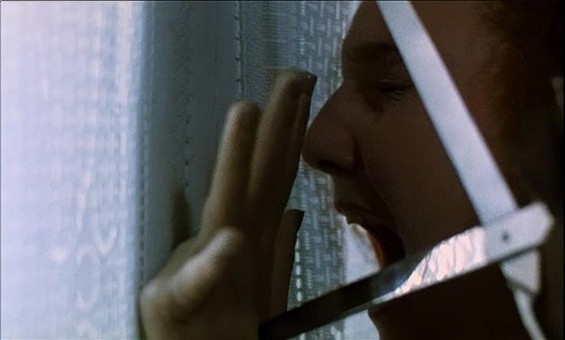
We’ve gone through this on the site before, but in case you’re just joining us, here’s one last primer: Giallo literally means “yellow” in Italian, and it’s an evocative reference to the yellowed pages of the pulp novels that were so popular in the first half of the previous century. The term Giallo does promise a kind of a pulp tale, but rather than more traditional pulp topics such as noir or sci-fi, giallo quickly diverged into its own beast. Generally speaking, giallo films tend to be lurid, bloody psychological thrillers. Think Alfred Hitchcock’s PSYCHO, only with a significant level-up on the gore. Giallo films may or may not have supernatural elements, but the color red (ironic, due to the name) is a near-constant. Stabbings abound. Quite honestly, I stayed away from the giallo genre for a long time because, despite its encouraging tendency to feature female protagonists, giallo as a result and by nature also features a preponderance of graphic and vicious violence towards women. I’m a guy who prefers giant monsters and the movies about them to those starring lady-killing knife-murderers, and — unfairly or not — I’d always figured giallos to be the artier precursor to slashers, like the FRIDAY THE 13TH series. I love HALLOWEEN (for the reasons given here) but I don’t love most slasher films. That assumption — about the connection between giallo films and slashers — is not entirely incorrect, but of course it’d be foolish to write off an entire genre, particularly one so influential.
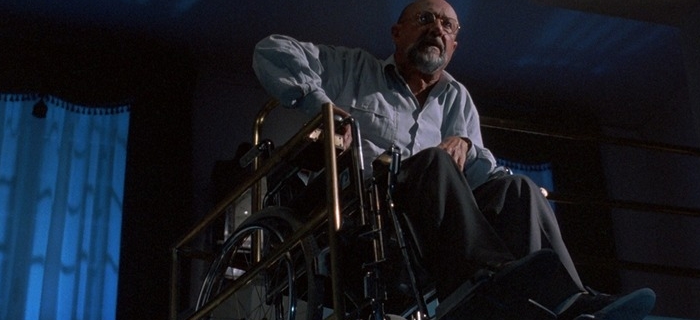
Directors like Mario Bava, Massimo Dallamano, Aldo Lado, Umberto Lenzi, Sergio Martino, and Lucio Fulci were the most prominent practitioners of giallo films, though genre journeymen more famous for other types of movies, such as Enzo Castellari, Antonio Margheriti, and Fernando Di Leo, also worked in the arena. That’s how significant a movement it was.
Of all giallo directors, Dario Argento is the one whose name is arguably most synonymous with the genre. His films THE BIRD WITH THE CRYSTAL PLUMAGE (1970), DEEP RED (1975), TENEBRAE (1982), and OPERA (1987), among others, are giallo hallmarks. The aforementioned SUSPIRIA (1977) is a giallo film with somewhat more of a supernatural angle than usual. (SUSPIRIA is part of an unofficial-official witchcraft trilogy, with 1980’s INFERNO and 2007’s THE MOTHER OF TEARS.) 1985’s PHENOMENA is even more of a departure.
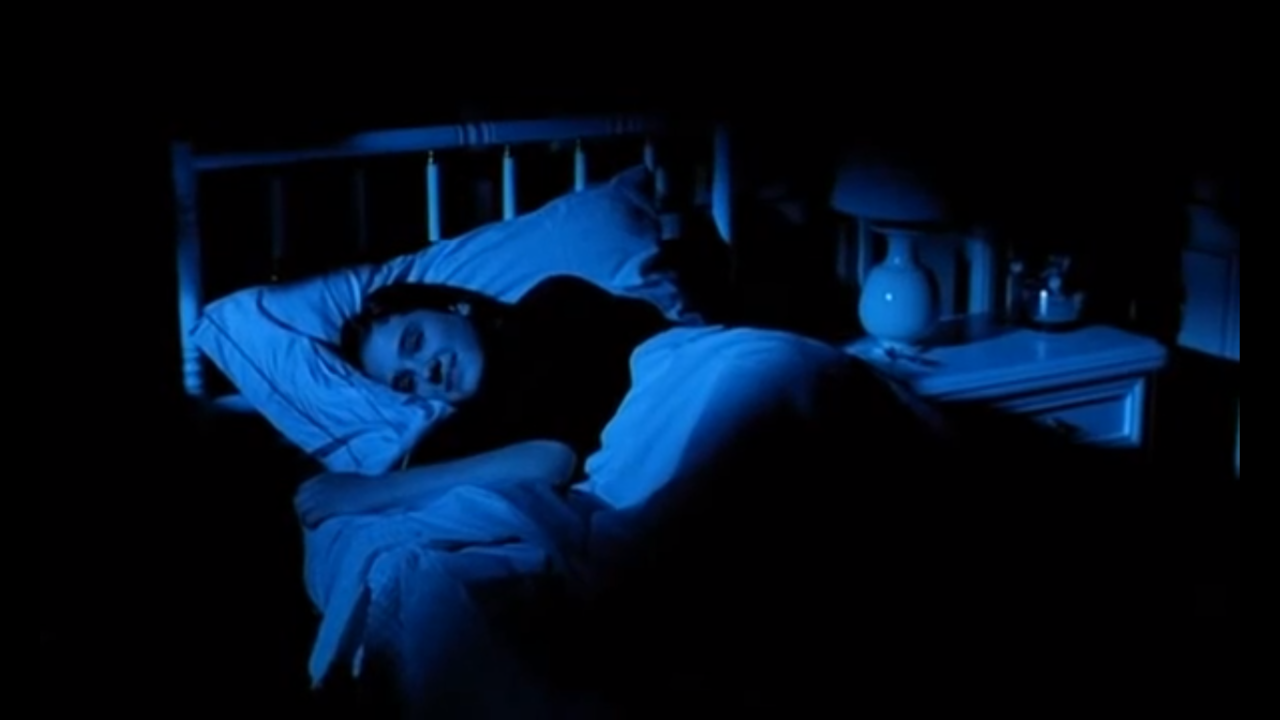
PHENOMENA is a deep, dark fairy tale. It’s a completely unrestrained work. It defies convention, throws peerlessly bizarre protagonists into the mix, and veers tonally all over the map. Clearly, if Argento and his co-writer Franco Ferrini had an idea, they put it in. No doubt this is what puts off some of the film’s detractors, but for me, the audaciousness is thrilling and inspiring. Let’s do a fuller recap and you’ll see what I mean:
The film opens on a cloudy late afternoon in the rolling, lushly green hills of Switzerland. Right off the bat, what Argento manages to do with wind is eerie and evocative, and the primal unsettling quality of wind through trees is a recurring part of the film. The instrumental score by frequent Argento collaborators Goblin (the Italian prog-rock band who also did the score for Romero’s DAWN OF THE DEAD) and Simon Boswell is weird and unforgettable and also a kind of secondary character who wanders throughout the film. So by the time any human characters enter the frame, the tone for PHENOMENA is set.
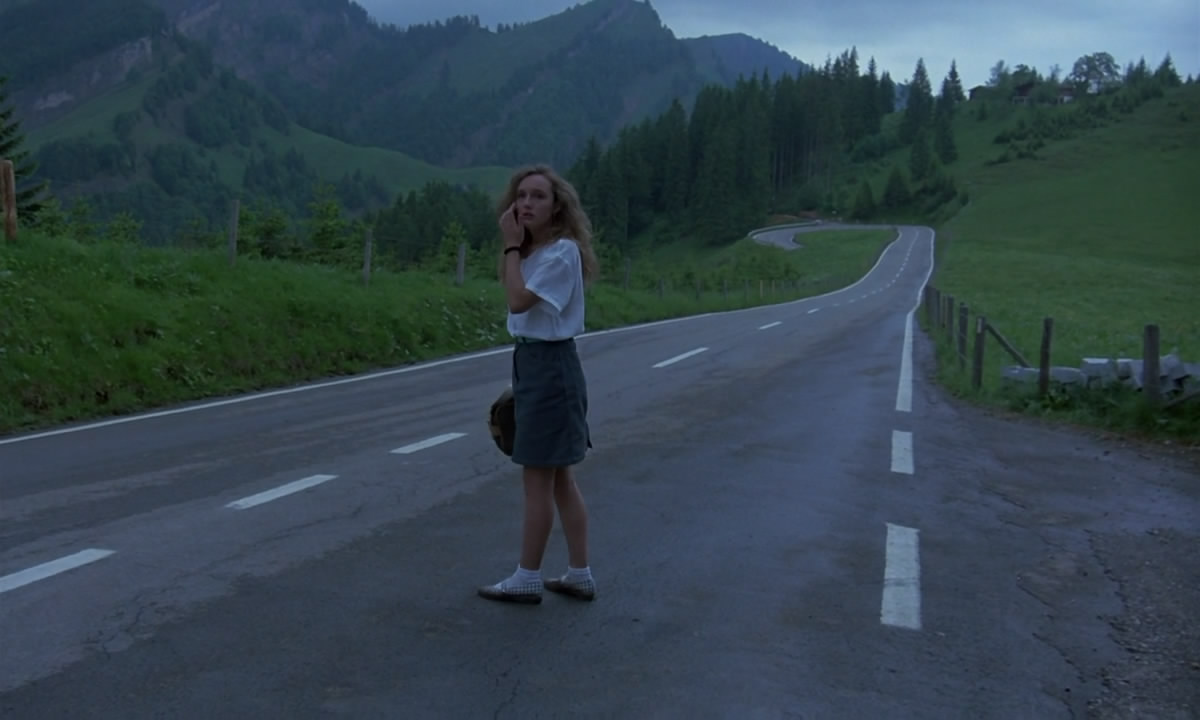
A busload of young tourists is herded onto a bus by their chaperone, and as the bus is driving off, one schoolgirl is left behind. She chases the bus, but as it disappears, she realizes how very alone she is. The girl is played by a young actress named Fiore Argento, and if the surname sounds familiar, that’s no accident. Argento had no reservations about featuring his nearest and dearest in his films, often in ways that might give meeker hearts pause. More on that in a moment.

In an epically eerie sequence, the girl wanders through the hillside until she finds a small isolated cottage. With literally nowhere else to go, she ventures inside, calling out for help. There’s something chained inside the house. It breaks free, slashes at the girl, and chases her outside. We don’t see what the girl sees, although we do see some angles from the vantage point of her pursuer. The girl runs to a cave near a waterfall, and is run through with a pike. The attack continues until it’s clear the girl is dead, at which point something falls into the waterfall and is washed away by the rapids far below. In case it wasn’t immediately clear, the object is the girl’s head.

The next time we see that head, it’s dessicated almost down to the bone, with maggots and worms and all manners of creepy-crawlies doing what they do upon it. The skull is encased in glass, in the laboratory of a wheelchair-bound forensic entemologist named John McGregor. McGregor is describing his work to the two police investigators who have come to see him: He’s a scientist who uses insects to determine the method and manner of a victim’s demise — basically, if the TV show CSI were like this movie, I’d watch the TV show CSI.

Here’s why: McGregor is played by Donald Pleasence, the veteran British character actor who is probably best known to horror fans from his role in John Carpenter’s HALLOWEEN. He serves a similar function here. I should also mention that McGregor has an assistant named Inga who happens to be a chimpanzee. By assistant, I mean that Inga helps McGregor with his experiments and helps him talk out theories and also pushes his wheelchair for him. If you’re still reading, I appreciate it and I will understand fully if you want to stop now and run off to watch the movie for yourself. Totally understandable.
.jpg)
Into the movie comes young Jennifer Corvino, the teenaged protagonist of the film. She’s played by a then-14-year-old Jennifer Connelly in her first starring role, having previously made her debut appearance in Sergio Leone’s ONCE UPON A TIME IN AMERICA. Jennifer Connelly is shockingly beautiful in this movie — I say this not at all in any creepy way, because I’m not that way and that’s not the effect her appearance provokes — truly, she’s like a fairy-tale princess, the kind you want to see no harm befall. Your eyes go right to her in every scene, but not in any kind of lustful way — she’s simply a striking figure, almost a special effect, and exactly the kind of visual anchor that an unhinged narrative like this one requires.

Jennifer — Argento allegedly gave Connelly’s character the same first name in order to help the young actress get fully invested in the story — is headed to a Swiss boarding school, having been shipped off by a famous actor father who doesn’t seem to care all that much about her. Her chaperone is Frau Brückner, a local employee of her father, played by Daria Nicolodi, another frequent collaborator of Argento and the mother of his famous daughter, Asia. (Both of whom are actors Argento has used repeatedly in his films, to go back to an earlier point.) Jennifer is dropped off at school and nearly immediately ostracized by the other girls. Now, there are two things you need to know about Jennifer: She sleepwalks at night, and she can commune with insects. She has psychic abilities that give her disturbing images of the future and torment her sleep.
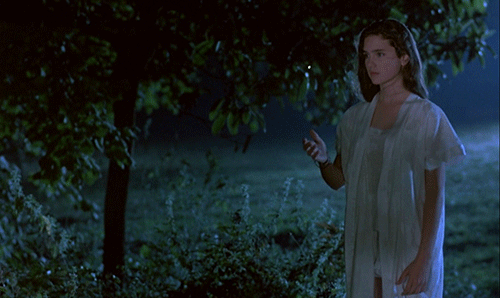
So one night, while walking in her sleep, Jennifer is awakened by clairvoyant visions of a schoolmate being murdered out in the surrounding woods. It seems that the killer from the opening scene isn’t done preying upon young victims. Jennifer gets lost in the woods, but is rescued by Inga (the chimp lab assistant), who introduces Jennifer to McGregor. With their shared affinity for insects, Jennifer and McGregor become fast friends, and soon enough, they team up to investigate the murders on their own. Since McGregor is house-bound, he sends out Jennifer with a flesh fly in a box to aid in the investigation. Jennifer and the fly find the cottage from the opening scene, which leads to more disturbing revelations.

In other words, what I am telling you is that, in addition to a chimpanzee lab assistant of dubious intentions, this movie also has a fly detective. And songs by famed metal bands Iron Maiden and Motorhead. And a little person with Patau syndrome. (Probably don’t Google that.) And I’m not even done recapping yet, but I’m going to stop there, because believe it or not, PHENOMENA has even more twists and turns and seemingly random factors that all collide and result in a uniquely fizzy combustion of weird inspiration. I don’t want to reveal any more than I already have.
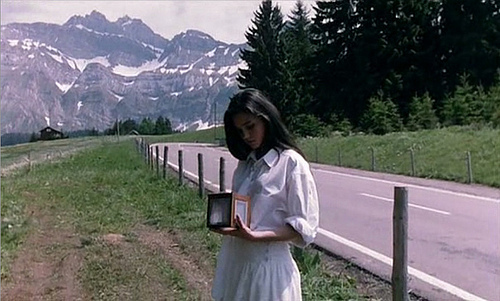
PHENOMENA is an everything movie. Most people are understandably content with just one or two flavors, and such a mad mixture of elements is too much for them. Most movies would begin and end with the string of murders at a Swiss boarding school, or with the sleepwalking girl with psychic powers. The apocalyptic swarms of flies and the chimpanzee protagonist may be five or six too many layers of dizzy, deranged inspiration for the conventional film-going mind to handle. But PHENOMENA is the only movie I know of in which a chimpanzee protagonist and an apocalyptic swarm of flies team up with Jennifer Connelly and Donald Pleasence in order to defeat a deranged murderer — if you know of any others PLEASE let me know — and that is the reason it gets the blue ribbon from me.

PHENOMENA is playing at Anthology Film Archives on March 27th at 7:00pm, as part of Malastrana Film Series Presents: THE KILLER MUST KILL AGAIN!: GIALLO FEVER, PART 2!
— JON ABRAMS (@jonnyabomb).
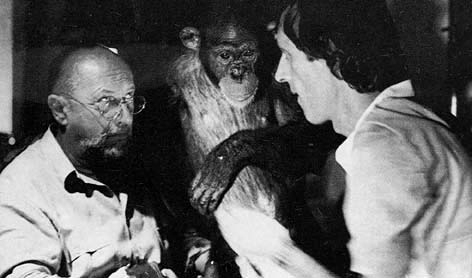

- [THE BIG QUESTION] WHAT’S YOUR FAVORITE FEMALE ENSEMBLE IN MOVIES? - July 22, 2016
- [IN THEATERS NOW] THE BOY (2016) - January 24, 2016
- Cult Movie Mania Releases Lucio Fulci Limited Edition VHS Sets - January 5, 2016
Tags: Animals, Apes, Bugs, Daria Nicolodi, dario argento, Donald Pleasence, Fire, Giallo, Giallo Week, Goblin, Horror, Iron Maiden, Jennifer Connelly, Little People, Motorhead, Simon Boswell, Skeletons, World Cinema






No Comments